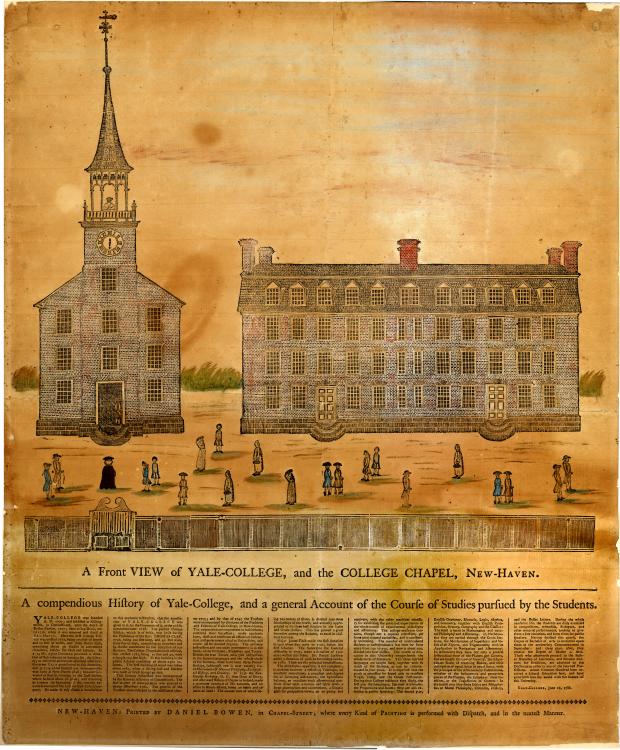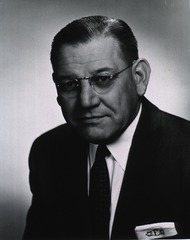|
Thomas M. Achenbach
Thomas M. Achenbach (1940-2023) was Professor of Psychiatry and Psychology and President of the nonprofit Research Center for Children, Youth, and Families at the University of Vermont. His research on syndromes of psychopathology gave rise to the terms “Internalizing” and “Externalizing”. His book in 1974 about developmental psychopathology was important to the foundation of this research area. Early life and education Achenbach was born in Stamford, Connecticut, and grew up in Wethersfield, Connecticut. He earned his bachelor's degree summa cum laude from Yale University and spent a postgraduate year at the University of Heidelberg as a German Government Fellow. He earned his Ph.D. at the University of Minnesota, followed by an NIMH Postdoctoral Fellowship at the Yale Child Study Center. He married his research collaborator, Leslie Rescorla in 2000. His previous marriage had ended in divorce. Career Achenbach served as Assistant Professor and then Associate Profes ... [...More Info...] [...Related Items...] OR: [Wikipedia] [Google] [Baidu] |
University Of Vermont
The University of Vermont and State Agricultural College, commonly referred to as the University of Vermont (UVM), is a Public university, public Land-grant university, land-grant research university in Burlington, Vermont, United States. Founded in 1791, UVM is the oldest university in Vermont and the fifth-oldest in New England. UVM comprises ten colleges and schools, including the Robert Larner College of Medicine, and offers more than 100 undergraduate majors along with various graduate and professional programs. The University of Vermont Medical Center, has its primary facility on the UVM campus. It is Carnegie Classification of Institutions of Higher Education, classified among "R1: Doctoral Universities—Very high research activity". In athletics, UVM's teams, known as the Vermont Catamounts, Catamounts, compete in NCAA Division I, primarily in the America East Conference and Hockey East, Hockey East Association. History The University of Vermont was founded as a pr ... [...More Info...] [...Related Items...] OR: [Wikipedia] [Google] [Baidu] |
Developmental Psychology
Developmental psychology is the scientific study of how and why humans grow, change, and adapt across the course of their lives. Originally concerned with infants and children, the field has expanded to include adolescence, adult development, aging, and the entire lifespan. Developmental psychologists aim to explain how thinking, feeling, and behaviors change throughout life. This field examines change across three major dimensions, which are physical development, cognitive development, and social emotional development. Within these three dimensions are a broad range of topics including motor skills, executive functions, moral understanding, language acquisition, social change, personality, emotional development, self-concept, and identity formation. Developmental psychology examines the influences of nature ''and'' nurture on the process of human development, as well as processes of change in context across time. Many researchers are interested in the interactions ... [...More Info...] [...Related Items...] OR: [Wikipedia] [Google] [Baidu] |
Yale University Faculty
Yale University is a Private university, private Ivy League research university in New Haven, Connecticut, United States. Founded in 1701, Yale is the List of Colonial Colleges, third-oldest institution of higher education in the United States, and one of the nine colonial colleges chartered before the American Revolution. Yale was established as the Collegiate School in 1701 by Congregationalism in the United States, Congregationalist clergy of the Connecticut Colony. Originally restricted to instructing ministers in theology and sacred languages, the school's curriculum expanded, incorporating humanities and sciences by the time of the American Revolution. In the 19th century, the college expanded into graduate and professional instruction, awarding the first Doctor of Philosophy, PhD in the United States in 1861 and organizing as a university in 1887. Yale's faculty and student populations grew rapidly after 1890 due to the expansion of the physical campus and its scientif ... [...More Info...] [...Related Items...] OR: [Wikipedia] [Google] [Baidu] |
Living People
Purpose: Because living persons may suffer personal harm from inappropriate information, we should watch their articles carefully. By adding an article to this category, it marks them with a notice about sources whenever someone tries to edit them, to remind them of WP:BLP (biographies of living persons) policy that these articles must maintain a neutral point of view, maintain factual accuracy, and be properly sourced. Recent changes to these articles are listed on Special:RecentChangesLinked/Living people. Organization: This category should not be sub-categorized. Entries are generally sorted by family name In many societies, a surname, family name, or last name is the mostly hereditary portion of one's personal name that indicates one's family. It is typically combined with a given name to form the full name of a person, although several give .... Maintenance: Individuals of advanced age (over 90), for whom there has been no new documentation in the last ten ... [...More Info...] [...Related Items...] OR: [Wikipedia] [Google] [Baidu] |
American Clinical Psychologists
American(s) may refer to: * American, something of, from, or related to the United States of America, commonly known as the "United States" or "America" ** Americans, citizens and nationals of the United States of America ** American ancestry, people who self-identify their ancestry as "American" ** American English, the set of varieties of the English language native to the United States ** Native Americans in the United States, indigenous peoples of the United States * American, something of, from, or related to the Americas, also known as "America" ** Indigenous peoples of the Americas * American (word), for analysis and history of the meanings in various contexts Organizations * American Airlines, U.S.-based airline headquartered in Fort Worth, Texas * American Athletic Conference, an American college athletic conference * American Recordings (record label), a record label that was previously known as Def American * American University, in Washington, D.C. Sports teams S ... [...More Info...] [...Related Items...] OR: [Wikipedia] [Google] [Baidu] |
University Of Minnesota Alumni
A university () is an institution of tertiary education and research which awards academic degrees in several academic disciplines. ''University'' is derived from the Latin phrase , which roughly means "community of teachers and scholars". Universities typically offer both undergraduate and postgraduate programs. The first universities in Europe were established by Catholic monks. The University of Bologna (), Italy, which was founded in 1088, is the first university in the sense of: *being a high degree-awarding institute. *using the word (which was coined at its foundation). *having independence from the ecclesiastic schools and issuing secular as well as non-secular degrees (with teaching conducted by both clergy and non-clergy): grammar, rhetoric, logic, theology, canon law and notarial law.Hunt Janin: "The university in medieval life, 1179–1499", McFarland, 2008, , p. 55f.de Ridder-Symoens, Hilde''A History of the University in Europe: Volume 1, Universities in the Mi ... [...More Info...] [...Related Items...] OR: [Wikipedia] [Google] [Baidu] |
1940 Births
A calendar from 1940 according to the Gregorian calendar, factoring in the dates of Easter and related holidays, cannot be used again until the year 5280. Events Below, events related to World War II have the "WWII" prefix. January *January 4 – WWII: Luftwaffe Chief and Generalfeldmarschall Hermann Göring assumes control of most war industries in Nazi Germany, Germany, in his capacity as Plenipotentiary for the Four Year Plan. *January 6 – WWII: Winter War – General Semyon Timoshenko takes command of all Soviet forces. *January 7 – WWII: Winter War: Battle of Raate Road – Outnumbered Finnish troops decisively defeat Soviet forces. *January 8 – WWII: **Winter War: Battle of Suomussalmi – Finnish forces destroy the 44th Rifle Division (Soviet Union), Soviet 44th Rifle Division. **Food rationing in the United Kingdom begins; it will remain in force until 1954. *January 9 – WWII: British submarine is sunk in the Heligoland Bight. *January 10 – WWII: Mechele ... [...More Info...] [...Related Items...] OR: [Wikipedia] [Google] [Baidu] |
DSM-5
The ''Diagnostic and Statistical Manual of Mental Disorders, Fifth Edition'' (DSM-5), is the 2013 update to the '' Diagnostic and Statistical Manual of Mental Disorders'', the taxonomic and diagnostic tool published by the American Psychiatric Association (APA). In 2022, a revised version ( DSM-5-TR) was published. In the United States, the DSM serves as the principal authority for psychiatric diagnoses. Treatment recommendations, as well as payment by health care providers, are often determined by DSM classifications, so the appearance of a new version has practical importance. However, some providers instead rely on the International Statistical Classification of Diseases and Related Health Problems (ICD), and scientific studies often measure changes in symptom scale scores rather than changes in DSM-5 criteria to determine the real-world effects of mental health interventions. The DSM-5 is the only DSM to use an Arabic numeral instead of a Roman numeral in its title, as ... [...More Info...] [...Related Items...] OR: [Wikipedia] [Google] [Baidu] |
Child Behavior Checklist
The Child Behavior Checklist (CBCL) is a widely used caregiver report form identifying problem behavior in children.Achenbach, T.M., & Rescorla, L. A. (2001). ''Manual for the ASEBA School-Age Forms and Profiles.'' Burlington, VT: University of Vermont, Research Center for Children, Youth, and Families. It is widely used in both research and clinical practice with youths. It has been translated into more than 90 languages, and normative data are available integrating information from multiple societies. Because a core set of the items have been included in every version of the CBCL since the 1980s, it provides a meter stick for measuring whether amounts of behavior problems have changed over time or across societies. This is a helpful complement to other approaches for looking at rates of mental-health issues, as the definitions of disorders have changed repeatedly over the same time frame. It is a component in the Achenbach System of Empirically Based Assessment developed by Th ... [...More Info...] [...Related Items...] OR: [Wikipedia] [Google] [Baidu] |
Achenbach System Of Empirically Based Assessment
The Achenbach System of Empirically Based Assessment (ASEBA), created by Thomas Achenbach, is collection of questionnaires used to assess adaptive and maladaptive behavior and overall functioning in individuals. The system includes report forms for multiple informants – the Child Behavior Checklist (CBCL) is used for caregivers to fill out ratings of their child's behavior, the Youth Self Report Form (YSR) is used for children to rate their own behavior, and the Teacher Report Form (TRF) is used for teachers to rate their pupil's behavior. The ASEBA seeks to capture consistencies or variations in behavior across different situations and with different interaction partners. The ASEBA is used in a variety of settings, including mental health, school, research, and forensic settings. The ASEBA exists for multiple age groups, including preschool-aged children, school-aged children, adults, and older adults. Scores for individuals in each age group are norm-referenced. The ASEBA ha ... [...More Info...] [...Related Items...] OR: [Wikipedia] [Google] [Baidu] |
American Psychological Association
The American Psychological Association (APA) is the main professional organization of psychologists in the United States, and the largest psychological association in the world. It has over 170,000 members, including scientists, educators, clinicians, consultants, and students. It has 54 divisions, which function as interest groups for different subspecialties of psychology or topical areas. The APA has an annual budget of nearly $135 million. Profile The APA has task forces that issue policy statements on various matters of social importance, including abortion, human rights, the welfare of detainees, human trafficking, the rights of the Mental disorder, mentally ill, IQ testing, sexual orientation change efforts, and gender equality. Governance APA is a corporation chartered in Washington, D.C. APA's bylaws describe structural components that serve as a system of checks and balances to ensure democratic process. The organizational entities include: * APA President. The APA pr ... [...More Info...] [...Related Items...] OR: [Wikipedia] [Google] [Baidu] |
National Institute Of Mental Health
The National Institute of Mental Health (NIMH) is one of 27 institutes and centers that make up the National Institutes of Health (NIH). The NIH, in turn, is an agency of the United States Department of Health and Human Services and is the primary agency of the United States government responsible for biomedical and health-related research. NIMH is the largest research organization in the world specializing in mental illness. Shelli Avenevoli is the current acting director of NIMH. The institute was first authorized by the U.S. government in 1946, when then President Harry Truman signed into law the National Mental Health Act, although the institute was not formally established until 1949. NIMH is a $1.5 billion enterprise, supporting research on mental health through grants to investigators at institutions and organizations throughout the United States and through its own internal (intramural) research effort. The mission statement, mission of NIMH is "to transform the understan ... [...More Info...] [...Related Items...] OR: [Wikipedia] [Google] [Baidu] |





